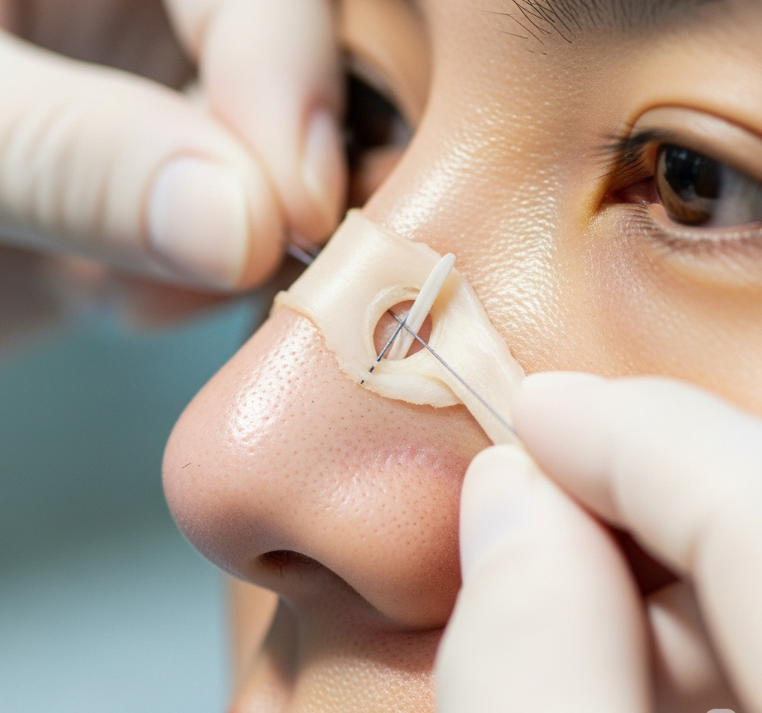Treatment Overview
Reduction Rhinoplasty for Wide Nose in Korea is a surgical procedure aimed at narrowing a broad nasal bridge, reducing tip width, and correcting flared nostrils to create a more proportionate and masculine nose. This procedure is ideal for men seeking subtle yet effective nasal refinement while maintaining natural facial harmony. Korean surgeons are highly experienced in both open and closed reduction techniques, achieving precise, balanced, and long-lasting results.
Purpose & Benefits
- Narrows a wide nasal bridge and tip.
- Refines flaring nostrils for improved symmetry.
- Enhances facial balance and masculine appearance.
- Corrects asymmetry or post-traumatic deformities.
- Provides durable, natural-looking results.
Ideal Candidates
- Men with broad or flat nasal bridges.
- Individuals with a wide or bulbous tip.
- Patients with flared nostrils seeking improved proportion.
- Those in good health with realistic expectations about masculine aesthetics.
- Patients requiring revision surgery for previous wide nose concerns.
Possible Risks & Complications
Although generally safe when performed by experienced Korean surgeons, potential risks include:
- Temporary swelling and bruising
- Minor asymmetry or irregular tip contour
- Infection (rare with proper surgical hygiene)
- Over- or under-correction of nasal width
- Rare need for revision surgery for complex cases
Surgical Techniques Used
Korean surgeons employ advanced techniques for reduction rhinoplasty:
- Osteotomy: Controlled nasal bone cuts to narrow the bridge.
- Tip Refinement: Transdomal/interdomal sutures and cartilage reshaping for tip narrowing and projection.
- Alar Base Reduction: Reduces flaring nostrils for better symmetry.
- Open or Closed Approach: Open rhinoplasty provides maximum precision; closed rhinoplasty allows minimal scarring.
- Cartilage Grafting: Septal or ear cartilage may be used to support tip or bridge refinement.
Recovery & Aftercare
- Downtime: 7–10 days for initial recovery; swelling may persist 2–4 weeks.
- Splint or Stitch Removal: Usually 5–7 days post-surgery.
- Aftercare: Avoid trauma, strenuous activity, and smoking.
- Structured post-operative care in Korea includes:
- Swelling and bruising management
- Gentle massage for tip and bridge contour
- Scar management with laser therapy if needed
- Regular follow-ups to monitor healing and symmetry
Results & Longevity
- Permanent narrowing and refinement of the nasal bridge, tip, and nostrils.
- Natural-looking masculine nose that complements facial features.
- Full results visible within 2–3 months after swelling subsides.
- Long-lasting outcomes when performed by experienced Korean surgeons.
Treatment Process in Korea
Korea is a top destination for reduction rhinoplasty for wide noses because of:
- 3D Imaging & Pre-Surgery Planning: Accurate simulation of expected results.
- Precision Bone and Cartilage Manipulation: Allows exact narrowing and tip refinement.
- Gender-Specific Design: Maintains masculine proportions while refining width and tip.
- Comprehensive Post-Operative Care: Swelling management, scar reduction, and follow-ups for optimal healing.
Why Korea is a Top Destination:
- Surgeons specialized in male rhinoplasty and wide nose correction.
- Advanced techniques for natural, long-lasting results.
- Integration of functional and aesthetic improvements in a single surgery.
- Full support for international patients including translators, accommodation, and post-operative care.
Cost Range
The cost of Reduction Rhinoplasty for Wide Nose in Korea depends on complexity:
- Basic Bridge and Tip Narrowing: ₩4,000,000 – ₩7,000,000 KRW ($3,000 – $5,400 USD)
- Combined Procedures (Bridge + Tip + Alar Base Reduction): ₩7,000,000 – ₩12,000,000 KRW ($5,400 – $9,200 USD)
- Revision or Complex Wide Nose Surgery: ₩12,000,000 – ₩18,000,000 KRW ($9,200 – $13,800 USD)
Inclusions:
- Surgeon’s fee and anesthesia
- Clinic or hospital facilities
- Post-operative care and follow-ups
- Optional medical tourism packages including accommodation and translation
Popular Clinics in Korea
- ID Hospital (Gangnam, Seoul): Expert in reduction rhinoplasty for wide noses with natural masculine results.
- Banobagi Plastic Surgery (Seoul): Specializes in bridge and tip refinement for male patients.
- View Plastic Surgery (Seoul): Advanced 3D imaging and precise surgical techniques for optimal outcomes.
- DA Plastic Surgery (Seoul): Focused on structural and aesthetic enhancement for wide noses.
- JK Plastic Surgery (Seoul): JCI-accredited clinic providing high-quality care and international patient support.




